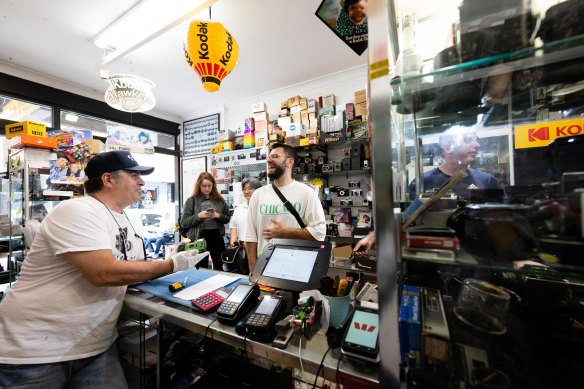While some manufacturing businesses remain strong, especially in food and beverages, he warned the decline of sophisticated parts of the sector such as the car industry threatened to undermine Australia’s skill base and reduce the diversity of employment.
“It’s a wake-up call,” Buchanan said. “Unless we make a conscious choice to build up our manufacturing base it will wither and die completely.”
He said problems caused by supply chain disruptions during COVID-19 underscored the importance of having a domestic manufacturing capability.
One branch of manufacturing which has thrived is beer making. The census shows employment in beer manufacturing jumped 58 per cent between 2011 and 2022 amid rapid growth in local microbreweries.
The fortunes of the photographic film processing business underscores how quickly consumer preferences can shift.
One-hour photo labs were once ubiquitous in suburban shopping strips, but they began to disappear as photographers switched to digital cameras during the early 2000s. Employment in photographic film processing plummeted by 55 per cent between 2011 and 2021, the census shows.
Now film photography is in the midst of a niche resurgence. Nick Vlahadamis, the owner of an “old school” camera and film shop in Newtown called Sydney Super 8, says business is booming. It is one of a handful of stores in the city that still sells and processes film.

Nick Vlahadamis at his Sydney Super8 store in Newtown where the sale and processing of film is booming. A recent revival in film photography follows years of declining employment in the film processing industry.Credit:Photo: Janie Barrett
Vlahadamis says a revival in film photography, which began about four years ago, was “super-charged” during COVID-19 when many people had more spare time.
“Ten years ago when we started it was just a hobby that we wanted to share with people,” he said.
“We reinvented ourselves as a retro film place, and now it’s just taken off, it’s crazy … I’ve got an 83-year-old camera technician who has got more work now than when he retired in the 1990s.”
Healthcare and social assistance emerged as Australia’s biggest overall employer in 2011 and the latest census showed big increases in absolute job numbers in that sector. Employment in hospitals (except psychiatric) rose by 52 per cent in the decade to 2021 (to 545,158 workers) while social assistance services more than doubled in that period (to 278,221 workers).
Buchanan described the healthcare and social assistance industry as “the old man river” of Australian labour market growth because it “just keeps on rolling.”
About one in every seven Australian workers is now employed in healthcare and social assistance.
The census also revealed how workers in some fast-growing industries have settled in high numbers in certain districts.
One example is the cluster of computer system design and related services industry employees who live in the Parramatta area of Sydney. More than one in twenty working-age residents in this area work in this sector, the highest concentration of those workers in Australia.
The computer system design and services industry ranked among the nation’s fastest growing in the decade to 2021 – increasing by 82,303 to 221,712 workers in that period, a jump of almost 60 per cent.
Loading
Inner-city Melbourne is home to an unusually high concentration of cafe and restaurant workers. The industry employs more than one in 20 people of working age in the area.
This masthead chose to use industry instead of occupation data for this analysis because the Bureau of Statistics defines occupations in general terms. For example, the driver of a coal trucks’ occupation is ‘truck driver’, however, the industry they work in is coal mining and not transport.
The Morning Edition newsletter is our guide to the day’s most important and interesting stories, analysis and insights. Sign up here.
Stay connected with us on social media platform for instant update click here to join our Twitter, & Facebook
We are now on Telegram. Click here to join our channel (@TechiUpdate) and stay updated with the latest Technology headlines.
For all the latest Business News Click Here
For the latest news and updates, follow us on Google News.
